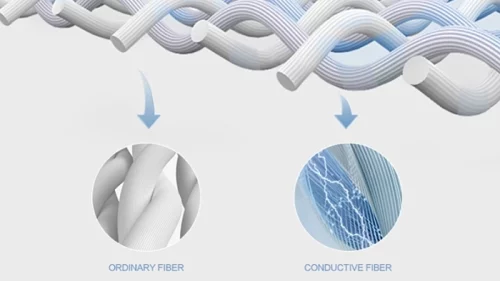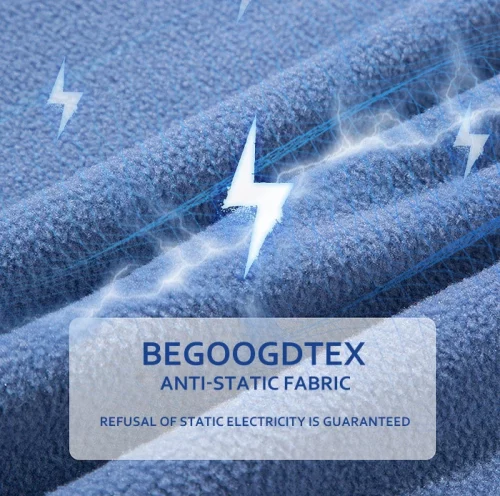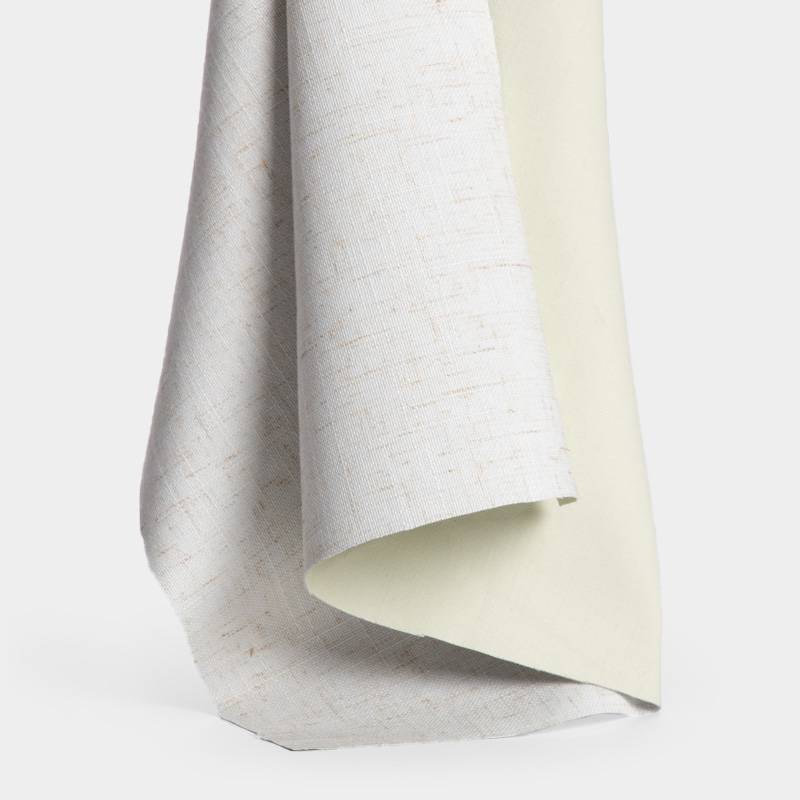Flame Retardant Anti-static Fabric Enhancing Workplace Safety

Potential Hazards of Static Electricity in the Workplace
The Nature of Static Electricity and Its Risks
Electricity that stays in one place is often seen in work settings where there is an uneven distribution of electrical charges inside or outside a material.The build up of this charge can happen because of rubbing of materials or applying pressure or separating them.The dangers linked to electricity are serious because it can create sparks that set off materials that easily catch fire or explode.In places, like chemical factories or oil refineries where safety’s crucial such events can result in disastrous outcomes.
Common Scenarios Leading to Static Electricity Accumulation
In scenarios where different substances come into contact or machines operate like when fabrics rub together or mechanisms run at high velocities. Static electricity can build up due to the friction, between them continuously accumulating in such cases. Furthermore dry conditions exacerbate this issue by facilitating the transfer and persistence of charges.Additionally industries that handle chemicals or electronic components are exposed to dangers posed by static electricity which could jeopardize safety and product integrity.
Principles of Anti-static Materials
Mechanisms of Static Electricity Generation
Static electricity is created when different materials come into contact and then separate from each other primarily due to their properties—a phenomenon known as the triboelectric effect where electrons are transferred between materials causing an imbalance of charges to occur between them. The amount of charge produced is influenced by various factors such as the characteristics of the materials involved in the interaction process along, with humidity levels and surrounding environmental conditions.
External Anti-static Measures
Temporary Anti-static Treatments
Temporary measures to prevent electricity include using coatings or sprays that lower surface resistance and rapidly disperse static charges, commonly employed for short-term needs when instant anti-static solutions are needed.
Durable Anti-static Treatments
Lasting treatments involve integrating anti-static substances into the material while it is being made, altering the surface characteristics to avoid the build-up of charges, and ensuring sustained protection.
Internal Anti-static Approaches
Use of Modified Fibers
Integrating altered fibers into fabrics proves to be a method for obtaining anti-static features from, within the material itself as these fibers are designed with built-in conductivity or moisture absorption attributes to reduce the accumulation of static electricity.
Blended Spinning Methods
Blending spinning techniques entail mixing fibers with conventional textile fibers while spinning resulting in a fabric containing spread-out conductive pathways that aid, in discharging charges.
Fiber Surface Coating with Conductive Metals or Carbon Black
When we cover the surfaces of fibers with metals or carbon black coating it improves their capacity to conduct electricity and helps in reducing the build up of static charges on them. This approach offers anti-static capabilities that can be beneficial in environments, with high risk factors.
Composition of Flame Retardant Anti-static Fabric
Key Materials Used in Flame Retardant Fabrics
Flame resistant fabrics are made from materials that can resist catching fire and help slow down the spread of flames.The process of creating flame retardant textiles involves spinning fibers that are naturally resistant to fire followed by weaving and dyeing to boost their attributes like resistance to wear and extreme temperatures.A blend of cotton and nylon, in flame retardant fabric not only provides durability but also adds strength while offering a soft texture when touched. This fabric doesn’t just make the garment longer by more than half but also offers protection, against electric sparks and arcs.
Integration of Anti-static Properties in Fabric Design
To improve safety, in workplaces more effectively manufacturers use advanced textile engineering methods to incorporate anti-static features into flame resistant fabrics. These fabrics are designed to resist flames and efficiently disperses static electricity by incorporating conductive fibers or applying special coatings during the production process.
Production Process of Flame Retardant Anti-static Fabric
Steps Involved in Manufacturing
The manufacturing process starts by choosing notch raw materials recognized for their fire resistance and strength qualities. These materials go through spinning and weaving procedures to create a fabric framework. In the weaving stage, some fibers may be coated with metals or carbon black to boost their anti-static properties. Subsequent dyeing steps guarantee color permanence while maintaining the fabric features.
Quality Control Measures to Ensure Safety Standards
Ensuring high quality is crucial when manufacturing flame retardant and anti-static fabrics through testing involving factors like resistance to fire and electricity conduction strength. The flame retardant rating of polyester fabric can exceed national standards at the B2 level ensuring adherence to global safety regulations. Constant quality checks during production ensure that each batch meets the requirements, for workplace safety purposes.
In industries like metallurgy and oil fields to coal mines where protective attire is vital for worker safety against fire and static electricity dangers; Inherent Flame Retardant (IFRs) and anti-static fabrics find usage highlighting their critical role, in safeguarding workers.
Common Applications of Flame Retardant Anti-static Fabric

Firefighting Workwear
Flame retardant anti-static fabric is crucial in manufacturing firefighting workwear. This specialized clothing protects firefighters from intense heat and flames while minimizing the risk of static electricity, which can ignite flammable substances. The fabric’s dual functionality ensures safety in high-risk environments where both fire and static hazards are prevalent.
Medical Products
In healthcare settings, medical facilities fabric that resists flames and prevents static electricity is utilized to create surgical gowns, patient attire, and medical textiles. Strict safety measures are in place to avoid discharge which could disrupt sensitive medical devices or trigger flammable substances. The fabric fire fire-resistant properties and anti-static capabilities make it a top pick for use, in the healthcare industry.
High-end Executive Clothing
In addition to its use in industry and healthcare settings flame retardant anti-static fabric is now finding its way into executive apparel. This adaptation showcases the versatility of the fabric showcasing how it can blend safety features with design. Professionals in workplaces with static electricity hazards can enjoy the benefits of clothing that provides safety and a polished look, at the same time.
Advantages of BEGOODTEX Anti-static Fabric

Excellent Conductive Performance with Superior Metal Fibers
BEGOODTEX anti-static fabric features high quality metal fibers that offer conductivity performance by establishing effective paths, for charge dissipation to mitigate the potential hazards of static electricity accumulation in critical settings.
Comfort in Wear with Seamless Fiber and Yarn Integration
The seamless integration of fibers and yarns in BEGOODTEX fabric ensures comfort during wear. This integration eliminates rough seams or edges that could cause discomfort or irritation, making it suitable for prolonged use in demanding work settings.
Washability Without Loss of Functionality
BEGOODTEX anti-static fabric stands out for its ability to be washed without losing its effectiveness—an advantage over fabrics that deteriorate with frequent washing cycles and maintain their protective features, for lasting performance.
Provision of Flame Retardant Protection
The BEGOODTEX fabric provides both flame properties and anti static capabilities to ensure safety in various environments where durability and heat resistance are essential features.
Frequently Asked Questions (FAQ)
Q: How Many Washes Can Flame Retardant Clothing Endure?
A: The durability of flame retardant clothing differs based on the material and treatment techniques employed in its production process. For instance, BEGOODTEX flame retardant fabric can achieve a flame retardant rating of at least B level according to standards and can endure more, than 30 washes without losing its protective properties.
Q: What Factors Affect the Electrostatic Performance of Fabrics?
A: Some elements impact the electrostatic properties of fabrics.
- Material composition: Fabrics with conductive fibers or coatings exhibit better electrostatic performance.
- Environmental conditions: Humidity levels significantly impact static charge accumulation; higher humidity reduces static buildup.
- Wear and maintenance: Regular washing and care can affect a fabric’s ability to dissipate static charges over time.
To effectively manage static fabrics for situations, with potential electrostatic hazards it is crucial to grasp these elements for optimal selection and upkeep.


